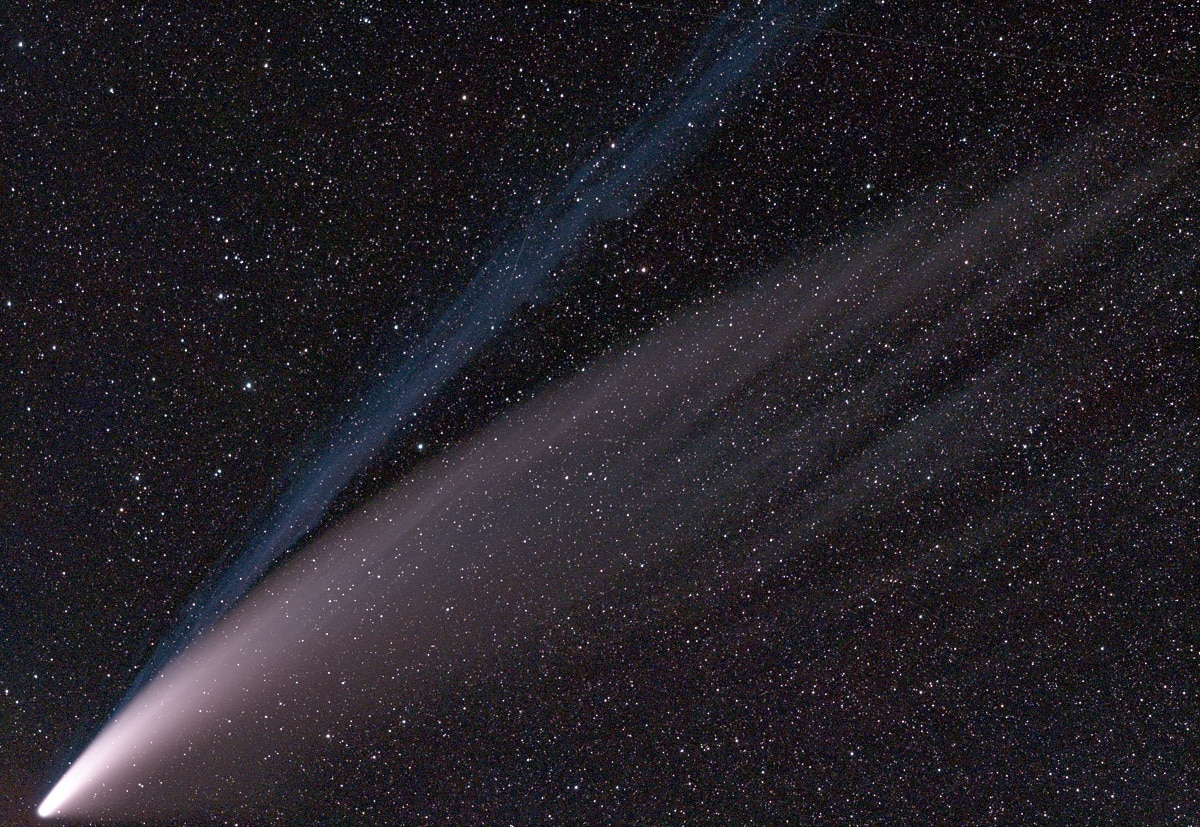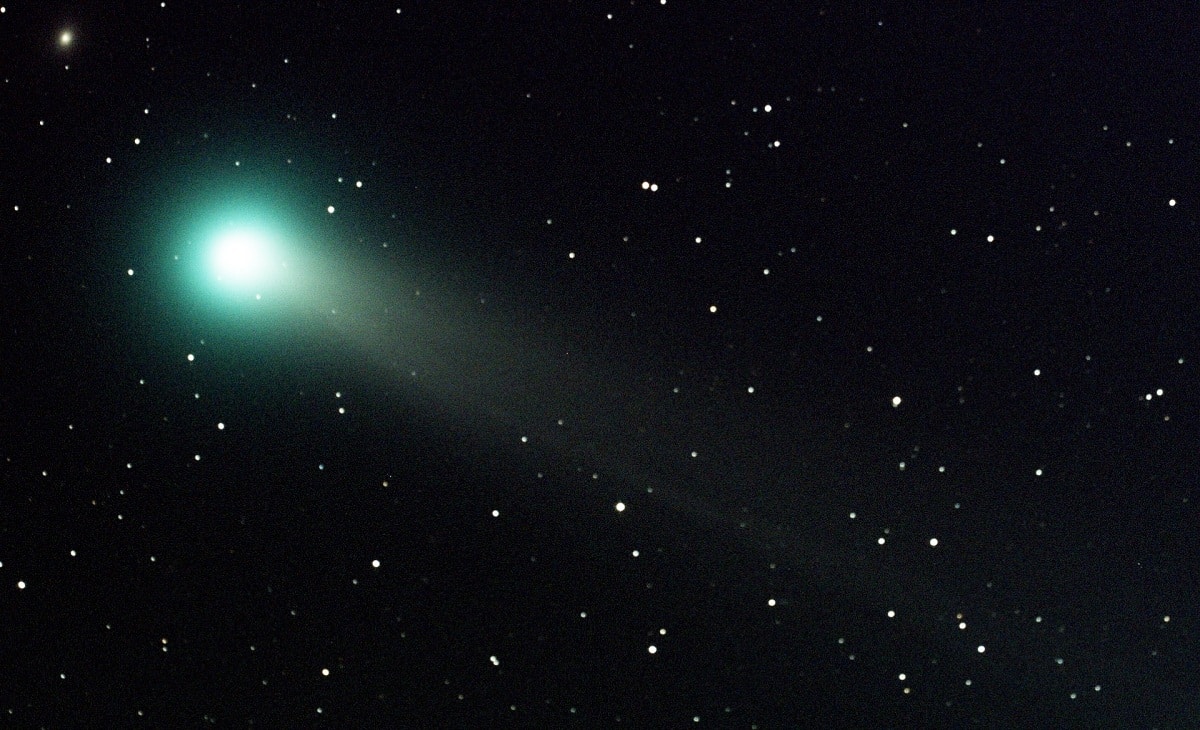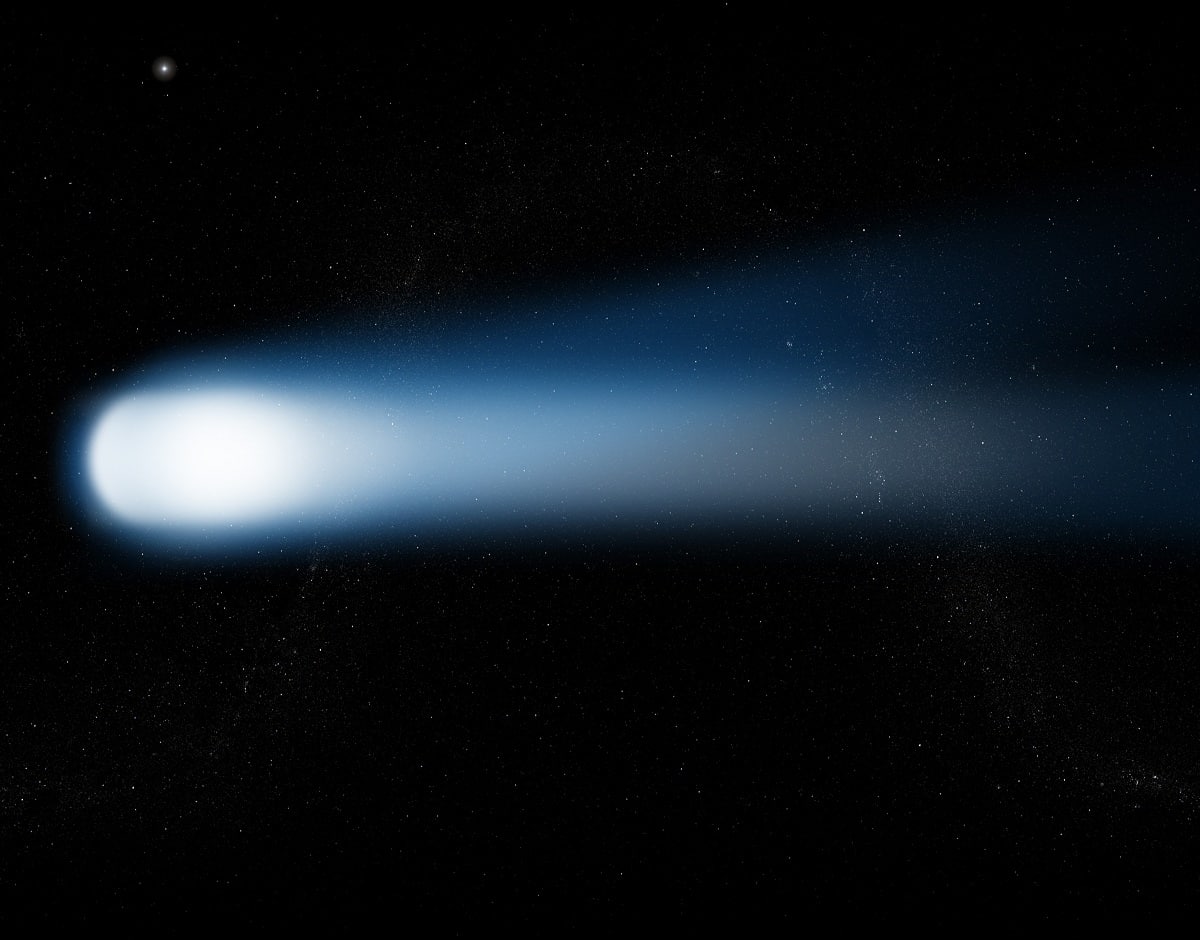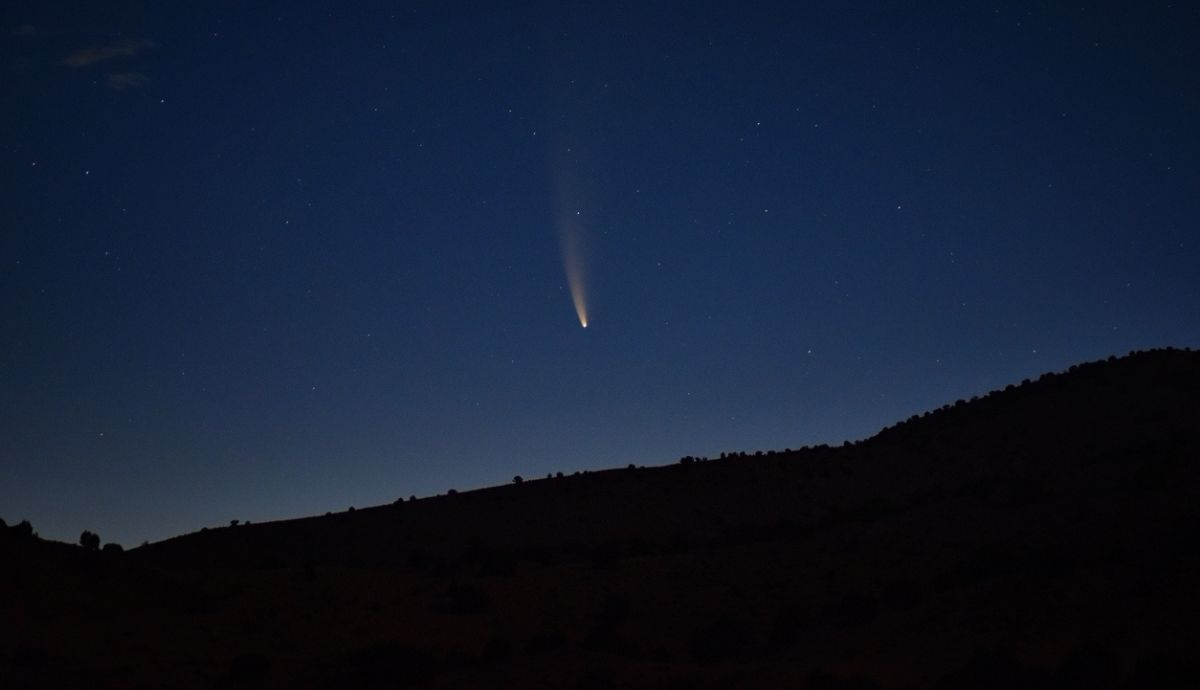
In astronomy, comets are known as certain types of moving astronomical objects, members of the solar system that form orbits of different orbits and durations around the sun. Most comets come from a trans-Neptunian object belt of clumps of icy objects known as the Kuiper, or even more so, the Oort Cloud. However, many people do not know what is a comet and what repercussions it has on planet Earth.
For this reason, we are going to dedicate this article to telling you what a comet is, what its characteristics, origin and importance are.
what is a comet

Comets form highly concentric orbits as they go around the sun, many returning after hundreds or even thousands of years. Its typical image is that of a bright oval body that leaves trails or comas of incandescent gas.
The only one regularly seen from the Earth's surface is the famous Halley's Comet. However, the study of comets, especially after the invention of the telescope, has been a concern of astronomers since ancient times.
In some cases, the recurring signs have been interpreted as omens, sources of revelation, or signs of the end of one age and the beginning of another. Myths like the biblical star of Bethlehem may be the mystical explanation for these astral travelers.
types of kites

Comets can be classified based on two criteria, the first is the distance they travel in their orbits and the type of orbits in which they exist. So we can talk about:
- Short or medium period comets. They are usually from the Kuiper Belt, 50 Astronomical Units (AU) from the Sun.
- long period comets. Those of the Oort cloud, almost a hundred times further from the edge of the solar system.
Likewise, we can distinguish between periodic and aperiodic comets, the former being those whose orbits take 200 years or less to complete; the seconds those whose orbits begin in 200 years. Likewise, their orbits can be elliptical, parabolic or hyperbolic.
Finally, comets are divided into the following categories according to their size:
- dwarf kite. The diameter is between 0 and 1,5 kilometers.
- Little kite. The diameter is between 1,5 and 3 kilometers.
- medium kite. The diameter is between 3 and 6 kilometers.
- big kite. The diameter is between 6 and 10 kilometers.
- giant kite. The diameter is between 10 and 50 kilometers.
- goliath comet. More than 50 kilometers in diameter.
parts of a comet

Comets are made up of two clearly distinguishable parts:
- Core. Composed of the solid matter of the comet, where its constituents are found (generally ice and inorganic compounds, although they normally contain traces of hydrocarbons), it is basically a rock in motion.
- A comma. Also known as a hair, it is a kilometer-long trail formed by gas ejected by a comet when it heats the sun, or stardust and debris it leaves in its path. In many cases, two distinct commas can be observed:
- The soda comma. Formed by water vapor expelled by comets, it supports the opposite direction of the sun's rays.
- the dust comma. Composed of the solid debris of comets suspended in space, when our planet enters the Earth's atmosphere, it triggers meteor showers when our planet passes through a certain orbit of the comet.
Key features
Comets come in a variety of shapes, usually irregular, ranging from a few kilometers to tens of meters in diameter. Its composition is one of the most common mysteries in astronomy, partially solved by the last close observation of Halley's Comet in 1986.
Comets are now known to contain large amounts of frozen water, dry ice, ammonia, methane, iron, magnesium, sodium, and silicates. Such composition suggests that comets may have been part of the organic material that gave rise to life on Earth.
Likewise, it is thought that they may be material witnesses of the formation of the solar system and keep inside physical secrets about the origin of the planets and the sun itself.
Examples
Some of the most famous comets are:
- Halley comet. A cycle of about 76 years, the only one visible on the earth's surface.
- Comet Hale-bop. One of the most talked about events of the 1997th century, it sparked countless rumors when it came close to Earth in XNUMX due to its enormous brightness.
- Comet Borrelly. Named after its discoverer, Frenchman Alphonse Borrell, it was visited by the US space probe Deep Space One in 2001.
- Comet Coggia. Huge aperiodic specimen visible to the naked eye on Earth in 1874. It visited our planet twice more before disintegrating in 1882.
- Comet Shoemaker–Levy 9. Famous for its impact on Jupiter in 1994, we witnessed the first documented alien impact in history.
- Comet Hyakutake. Discovered in January 1996, it was very close to Earth that year: the comet passed its closest distance in 200 years. It can be seen from all over the world, emits many X-rays and lasts approximately 72.000 years.
Halley comet
Although it is the most famous comet in the world, many people still do not know what it is. It is a comet with a large size and enough brightness that can be seen from Earth and that also orbits the sun like our planet. The difference with respect to him is that while our translation orbit is every year, that of Halley's comet is every 76 years.
Researchers have been investigating its orbit since the last time it could be seen from our planet, which was in 1986. The comet was named for the scientist who discovered it, Edmund Halley in 1705.. Studies say that the next time it can be seen on our planet is around the year 2061, possibly in the months of June and July.
As for the origin, it is thought that it was formed in the Oort Cloud, at the end of the Solar System. In these areas, the comets that originate have a long trajectory. Nevertheless, it is thought that the Halley was shortening its trajectory because it was trapped by the enormous gas giants that exist in the Solar System. This is the reason why it has such a short trajectory.
In general, all comets that have a short trajectory come from the Kuiper Belt and therefore this belt is attributed as the origin of Halley's Comet.
I hope that with this information you can learn more about what a comet is and its characteristics.
Topics related to the Solar System fascinate me! Thank you! I will always be attentive to your excellent knowledge...